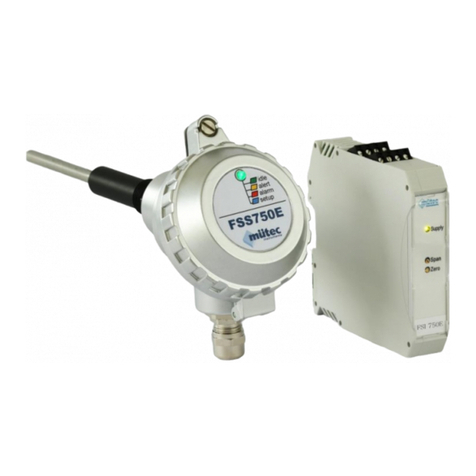
11/2018
5
2. General instructions
This device left the plant in flawless condition in terms of its safety features. To preserve this condition
and to ensure safe operation of the device, the user has to observe the instructions and warning notes
indicated in this operating manual.
NOTE
For the sake of clarity the manual does not contain complete detailed information on all product types
and can therefore not take into account every conceivable case with respect to installation, operation
and maintenance.
If you wish further information or should special problems arise that are not treated in sufficient detail in
the manual, you can obtain the necessary information by telephone.
Moreover, we point out that the content of the manual shall not constitute part of or amend a previous
or existing contract, agreement or legal relationship. All obligations of Mütec Instruments GmbH shall
result from the respective contract of purchase, which also contains the complete and solely valid
warranty terms. These contractual warranty terms shall neither be extended nor limited by the
information contained in the manual.
The content reflects the technical status at the time of printing. It is subject to technical modifications in
the course of further development.
DISCLAIMER
All modifications to the device fall under the responsibility of the user unless expressly specified
otherwise in the operating manual.
Qualified PERSONNEL
are persons who are familiar with installation, assembly, repair and operation of the product and have
the qualifications necessary for their work, such as:
• Training, instruction and/or authorization to operate and maintain equipment/systems in
accordance with the standards of safety technology for electrical circuits, high pressures and
corrosive as well as hazardous media.
• In the case of equipment with explosion protection: training, instruction and/or authorization
to perform work on electrical circuits for potentially explosive equipment.
• Training or instruction in accordance with the standards of safety technology regarding care
and use of appropriate safety equipment.
CAUTION
Potentially electrostatic components may be destroyed by voltage that is far below the limits of human
perception. Such voltage occurs even when you touch a component or electrical connections of a
component and are not electrostatically discharged. The damage that occurs to a component because
of overvoltage usually cannot be detected immediately and does not become noticeable until after a
longer operating period.




























